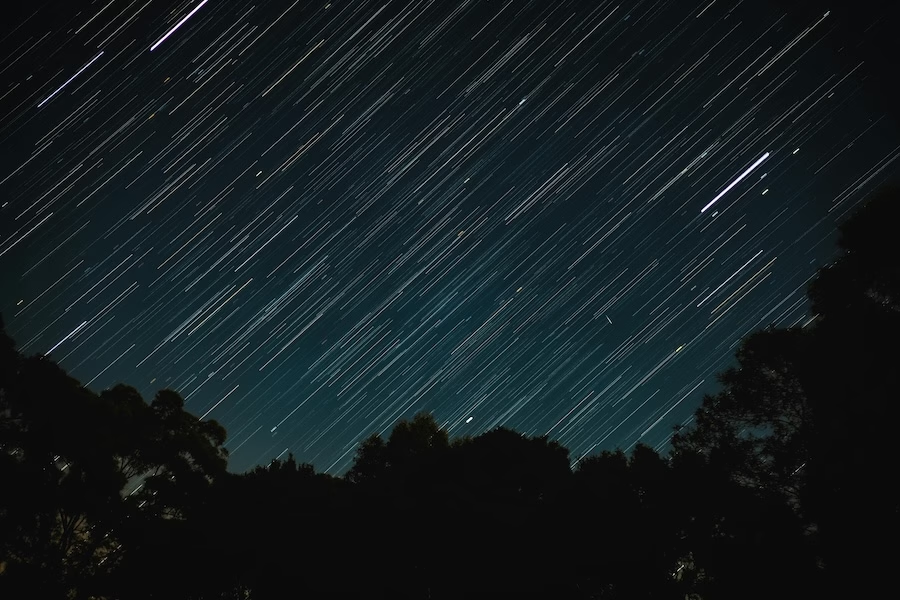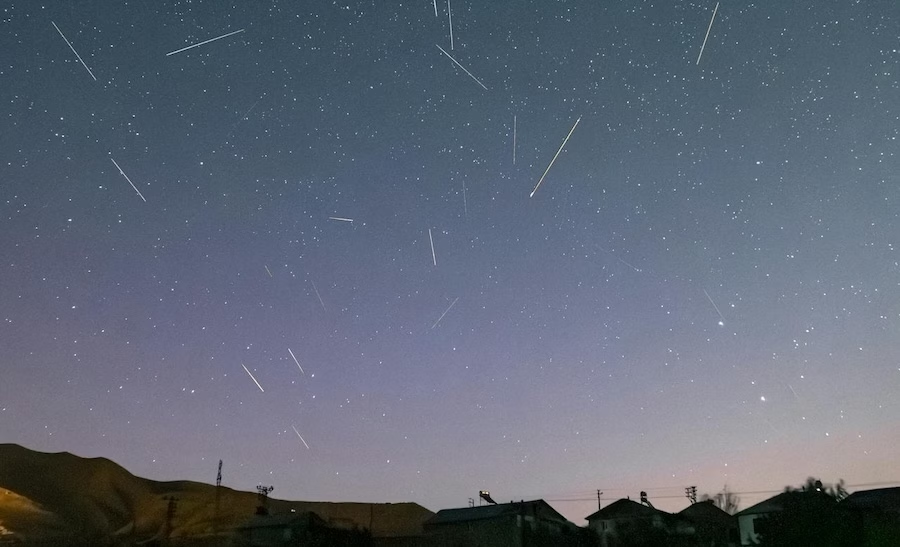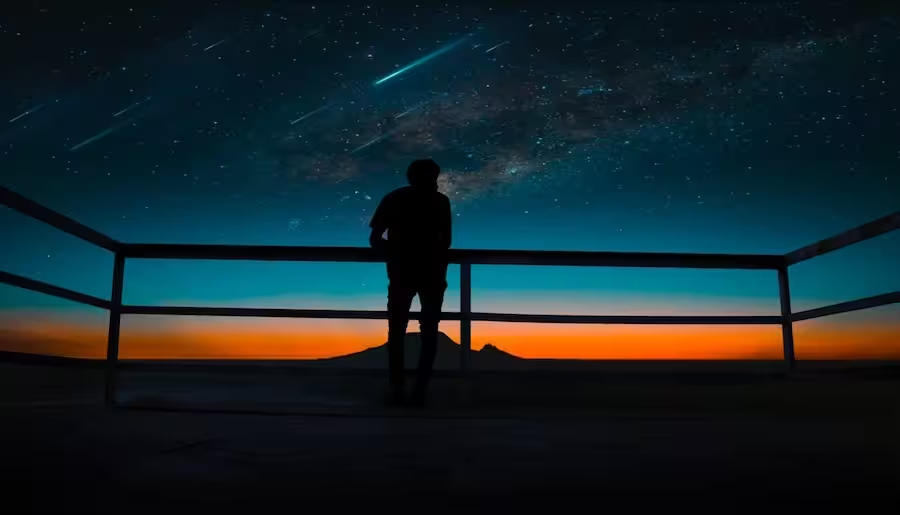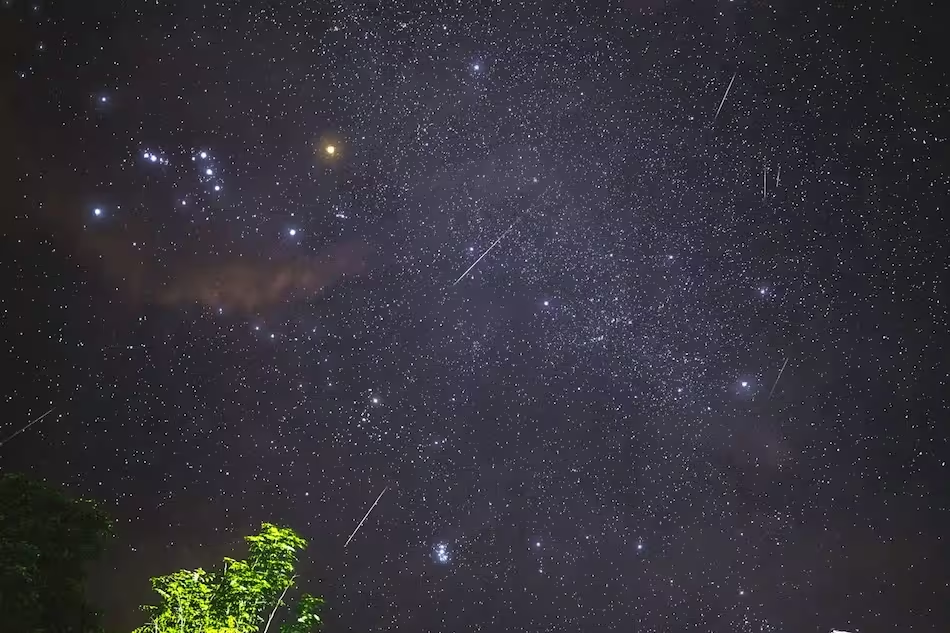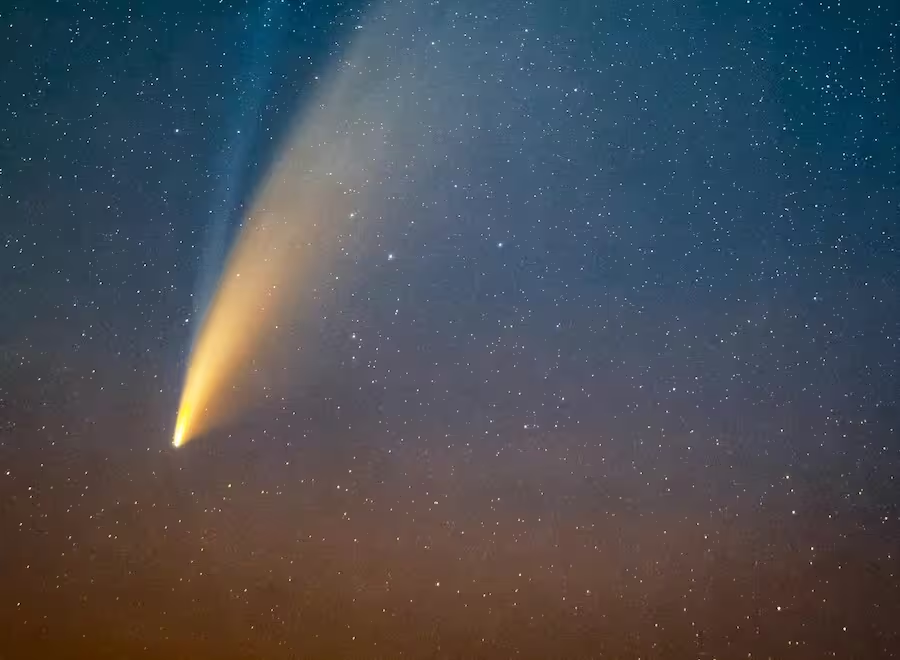Last year was an astronomical feast for Long Islanders—supermoons, comets, northern lights, and even a total solar eclipse. While 2025 might not match the cosmic fireworks of last year, it’s still packed with plenty of stargazing opportunities. Among them, meteor showers take center stage. These celestial spectacles are like cosmic fireworks, sending streaks of light across the heavens. Whether you’re a seasoned astronomer or just someone who loves looking up in wonder, grab a blanket, find a dark spot, and get ready for the show. Here’s your guide to every meteor shower lighting up Long Island skies in 2025!
Quadrantids
- When: December 26 – January 16
- Peak: January 2–3
- Best Viewing: Midnight to early morning
- Radiant: Near the Big Dipper
- What to Expect: The Quadrantids kick off the year with bright fireballs, courtesy of asteroid 2003 EH1, thought to be an extinct comet. With peak activity in the wee hours, this shower favors hardcore observers.
Lyrids
- When: April 15–30
- Peak: April 21–22
- Best Viewing: Just before dawn
- Radiant: Lyra
- What to Expect: The Lyrids, one of the oldest recorded meteor showers, often surprise with bright fireballs. This medium-strength shower is reliable for three nights centered around its peak, even if a crescent moon might dim the show slightly.
Eta Aquariids
- When: April 20 – May 21
- Peak: May 3–4
- Best Viewing: Pre-dawn
- Radiant: Aquarius
- What to Expect: Born from Halley’s Comet, these meteors streak quickly across the sky, leaving persistent trails. Though best seen in the Southern Hemisphere, Long Islanders might catch 10–30 meteors per hour.
Arietids
- When: May 29 – June 17
- Peak: Around the morning of June 7
- Best Viewing: The dark hour before dawn
- Radiant: Aries, in the eastern sky before sunrise
- What to Expect: The Arietids are a rare treat—a daytime meteor shower! While most of their activity is hidden by sunlight, you might catch a few in the dark hour before dawn, particularly on the mornings near the peak. With a zenithal hourly rate (ZHR) as high as 200 meteors detected via radar, this shower is considered one of the most active. However, don’t expect to see that many with your eyes—timing and luck are key!
Alpha Capricornids
- When: July 12 – August 12
- Peak: July 29 into the early morning of July 30
- Best Viewing: Late evening to midnight on the night of July 29
- Radiant: Capricornus, in the southern sky
- What to Expect: The Alpha Capricornids may be a minor shower with a modest rate of five meteors per hour, but it compensates by producing large, bright fireballs. The best time to watch is after midnight, and with luck, you could catch some truly spectacular streaks across the sky.
Perseids
- When: July 17 – August 23
- Peak: August 12–13
- Best Viewing: After midnight
- Radiant: Perseus
- What to Expect: The Perseids are summer’s marquee event, known for their colorful, steady meteors and iconic long trails. Perfect for warm August nights, this is a must-see for casual and avid stargazers alike.
Orionids
- When: October 2 – November 12.
- Peak: Night of October 22 into the early hours of October 23.
- Best Viewing: Predawn hours of October 23, when Orion is highest in the sky.
- Radiant: Orion, near the bright star Betelgeuse, rises in the east late in the evening and is high in the southern sky by early morning.
- What to Expect: The Orionids are known for their fast-moving meteors that sometimes leave glowing trails. This shower ALSO originates from Halley’s Comet, making it a favorite for astronomy enthusiasts. A waning crescent moon will rise near dawn this year, so visibility should be excellent.
Draconids Meteor Shower
- When: October 6 – October 10
- Peak: October 8, 2025
- Best Viewing: Early evening on the night of October 8, 2025
- Radiant: Draco, near the North Star
- What to Expect: The Draconids are unique in that they’re best viewed in the evening hours, just after sunset. While this is a short-lived shower, with only four days of activity and a peak rate of 10 meteors per hour, it can produce occasional outbursts of increased activity. The radiant is high in the northern sky, making it easy to spot from Long Island.
Northern Taurids
- When: October 13 – December 1
- Peak: November 8 into the early morning of November 9, 2025
- Best Viewing: Late night into the early morning on November 9, 2025
- Radiant: Taurus, rising in the eastern sky
- What to Expect: Known as the Northern sibling to the Southern Taurids, this shower is steady but faint, producing around five meteors per hour. What sets it apart is the potential for slow, bright fireballs lighting up the sky. The moon will be 83% full during the peak, so darker skies will offer the best views.
Leonids
- When: November 3 – December 2.
- Peak: The peak is expected on the night of November 16 into the early hours of November 17.
- Best Viewing: Predawn hours of November 17, when Leo rises high in the eastern sky.
- Radiant: Leo, near the bright star Regulus, rises in the east around 2 a.m. local time during the shower’s peak.
- What to Expect: The Leonids are famous for their fast-moving, bright meteors, often leaving persistent trails in their wake. While this shower doesn’t produce meteor storms every year, its history includes spectacular outbursts, such as in 1833, 1966, and 2001. This year, the moon will be just 9% full during the peak, offering a great chance to enjoy this celestial display.
Geminids
- When: December 4–20
- Peak: December 14–15
- Best Viewing: Before midnight
- Radiant: Gemini
- What to Expect: Often considered the best meteor shower of the year, the Geminids dazzle with a peak rate of 120 meteors per hour under ideal conditions. These meteors are bright, colorful, and slow-moving, making them a delight for skywatchers. While the Ursids come later in December, the Geminids are widely celebrated as the year’s meteor shower grand finale due to their sheer intensity and beauty. The best viewing window is late at night through the early morning hours. In 2025, the moon will be 13% full, providing excellent conditions for a spectacular show.
Ursids
- When: December 17 to December 26
- Peak: December 22 into the early morning of December 23, 2025
- Best Viewing: Late night into the early morning on December 22, 2025
- Radiant: Ursa Minor (The Little Dipper), near Polaris
- What to Expect: As one of the last showers of the year, the Ursids are a quiet but charming display. With a peak rate of about 10 meteors per hour, this shower is best viewed late at night or early morning. In 2025, a slim 3% moon offers excellent dark skies, giving stargazers the perfect backdrop for a peaceful meteor show during the holiday season.
Want to make your stargazing adventure even more special? Visit one of Long Island’s incredible public observatories to enhance your view of the cosmos. Check out our guide here.

